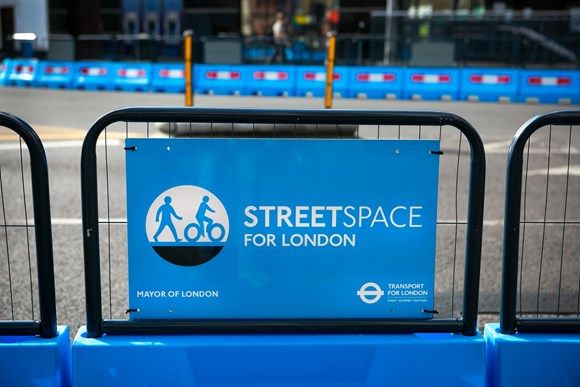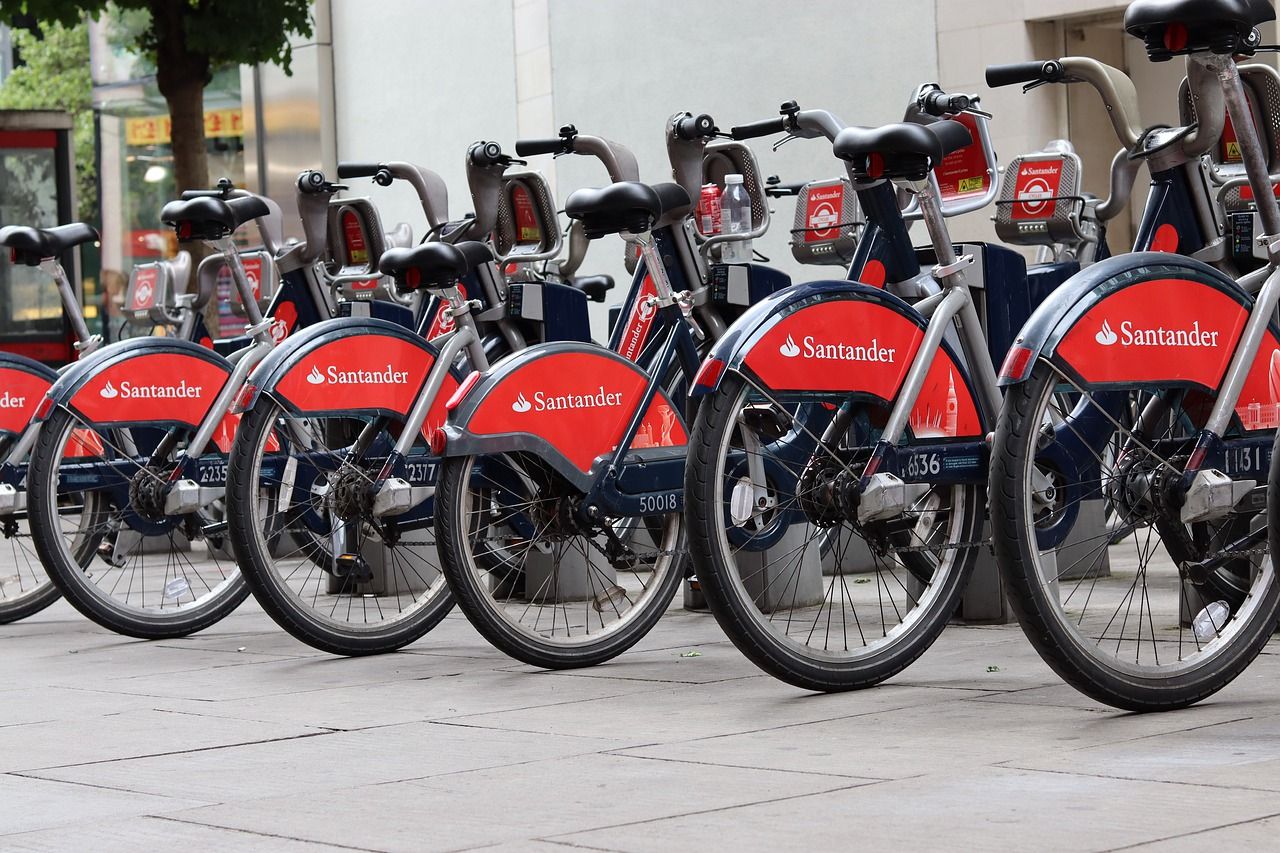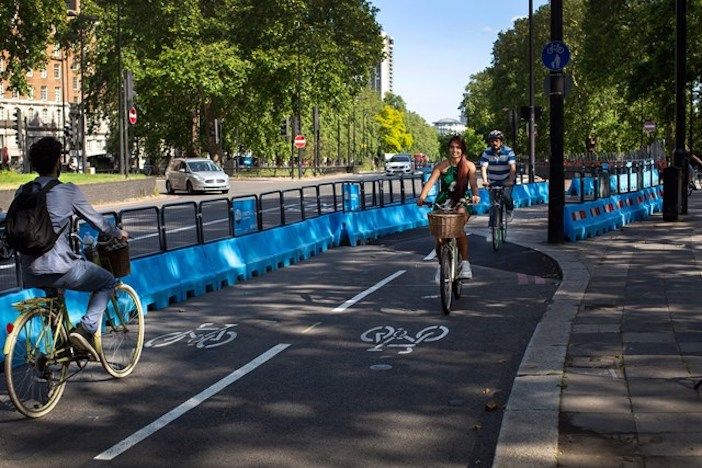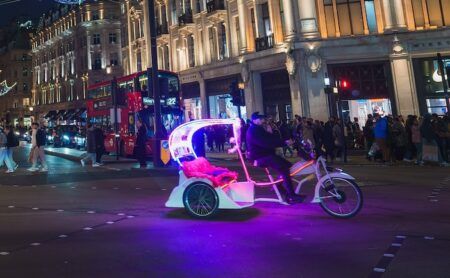Euston Road, which forms the northern border to London’s Congestion Zone, is one of the city’s busiest thoroughfares. Prior to Covid-19 removing space on it for cars and replacing it with a cycle lane seemed a remote possibility, but this week (ends 3 July) construction on just such a project begins.
The number of cycle journeys made across London has skyrocketed in recent weeks, with particular increases at weekends as people make the most of quieter roads to try out cycling for leisure journeys. The weekend of 20-21 June saw an increase of 151% compared to the same weekend last year, with cycling across the week up by 26%.
The landmark new temporary cycle lane on Euston Road is just one of the projects across London that has been awarded a share in more than £24m new funding for walking and cycling schemes, as part of the Mayor and TfL’s Streetspace for London plans, which plans to accommodate a possible ten-fold increase in cycling and five-fold increase in walking.
The work follows the recent construction of major new lanes using temporary materials along Park Lane in central London, and on the CS8 route between Chelsea Bridge and Lambeth Bridge. Many more such lanes are set to be rapidly deployed across the capital, with construction work to start in the coming weeks.

TfL is working closely with local boroughs to create more space for walking and cycling at pace across London by building a strategic network for cycling, transforming town centres and reducing traffic on residential streets.
With London’s public transport capacity running at significantly lower levels due to social distancing requirements, millions more journeys a day will need to be made by walking and cycling. If only a fraction of journeys are switched to car, London risks grinding to a halt, air quality will worsen, and road danger will increase.
 “I’m delighted that more than £24m has already been awarded to local boroughs to rapidly transform streets across our city, and that construction of the Euston Road cycle lane will begin this week,” says The Mayor of London, Sadiq Khan. “With more than 500 Streetspace schemes already approved and hundreds more still to come, we will enable millions more journeys to be made by walking and cycling.”
“I’m delighted that more than £24m has already been awarded to local boroughs to rapidly transform streets across our city, and that construction of the Euston Road cycle lane will begin this week,” says The Mayor of London, Sadiq Khan. “With more than 500 Streetspace schemes already approved and hundreds more still to come, we will enable millions more journeys to be made by walking and cycling.”
“We’re excited about the landmark cycle lane on Euston Road and to see the results of major investment from TfL and councils in walking and cycling infrastructure across London,” says James Austin, London director of walking and cycling charity Sustrans. “ Sustrans is passionate about developing confidence and skills of new cyclists alongside infrastructure improvements. These changes deliver safer travel for Londoners during the pandemic and a healthier, greener London for the future. All boroughs must seize this opportunity to create cycle and pedestrian friendly streets and protect vulnerable road users. At this crucial point when people are again travelling more, we have to maintain momentum and deliver the ambition in the Streetspace projects.”
32 Streetspace schemes have been created on the Transport for London Road Network (TLRN) so far. This comprises 13,055 m² of extra pedestrian space and 5.3km of extra cycling space. An additional 7.6km of new or upgraded cycling space has been delivered to date on borough roads.

TfL recently announced an expansion of the Santander Cycles scheme to keep up with the unprecedented demand. There were 52,160 Santander Cycle hires on Thursday 25 June – with Wednesday 24 June the first time there has been more than 50,000 hires on a normal working day. In response to this, TfL is making 1,700 additional Santander Cycle bikes available, bringing the total to more than 14,000 – an increase of nearly 15% and the largest single increase in bikes for the scheme since 2013. Eight new docking stations are also being installed this summer to ensure more Londoners than ever have access to the bikes.





